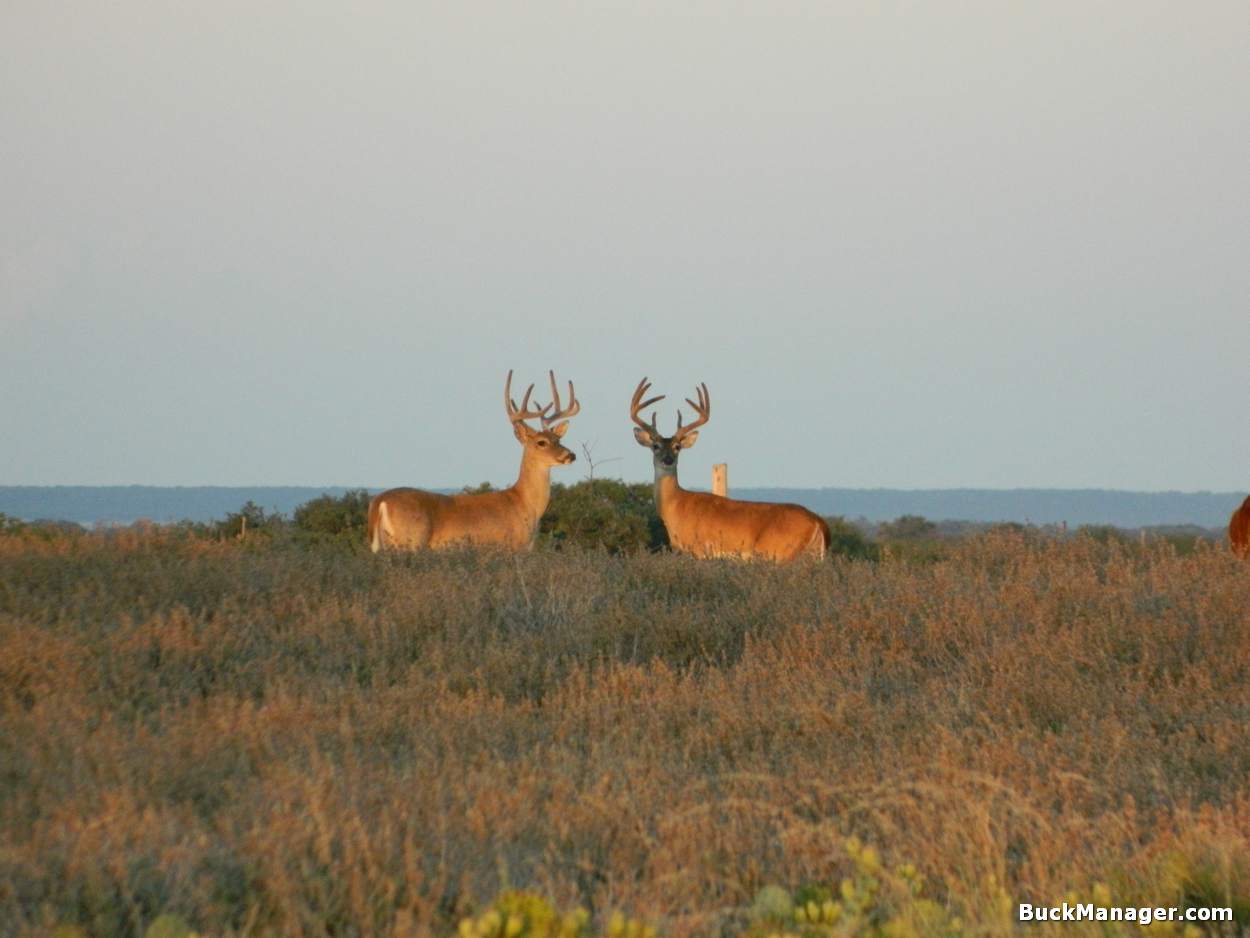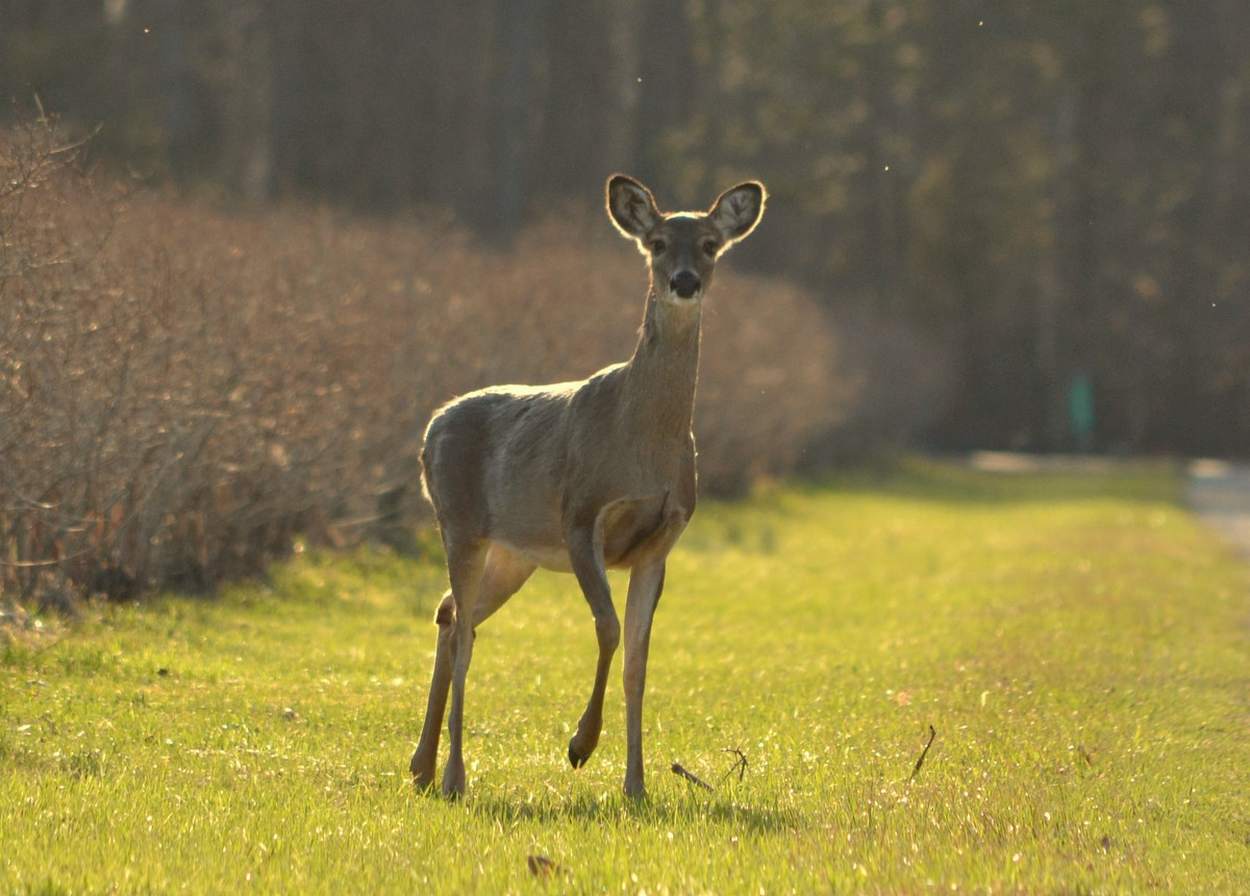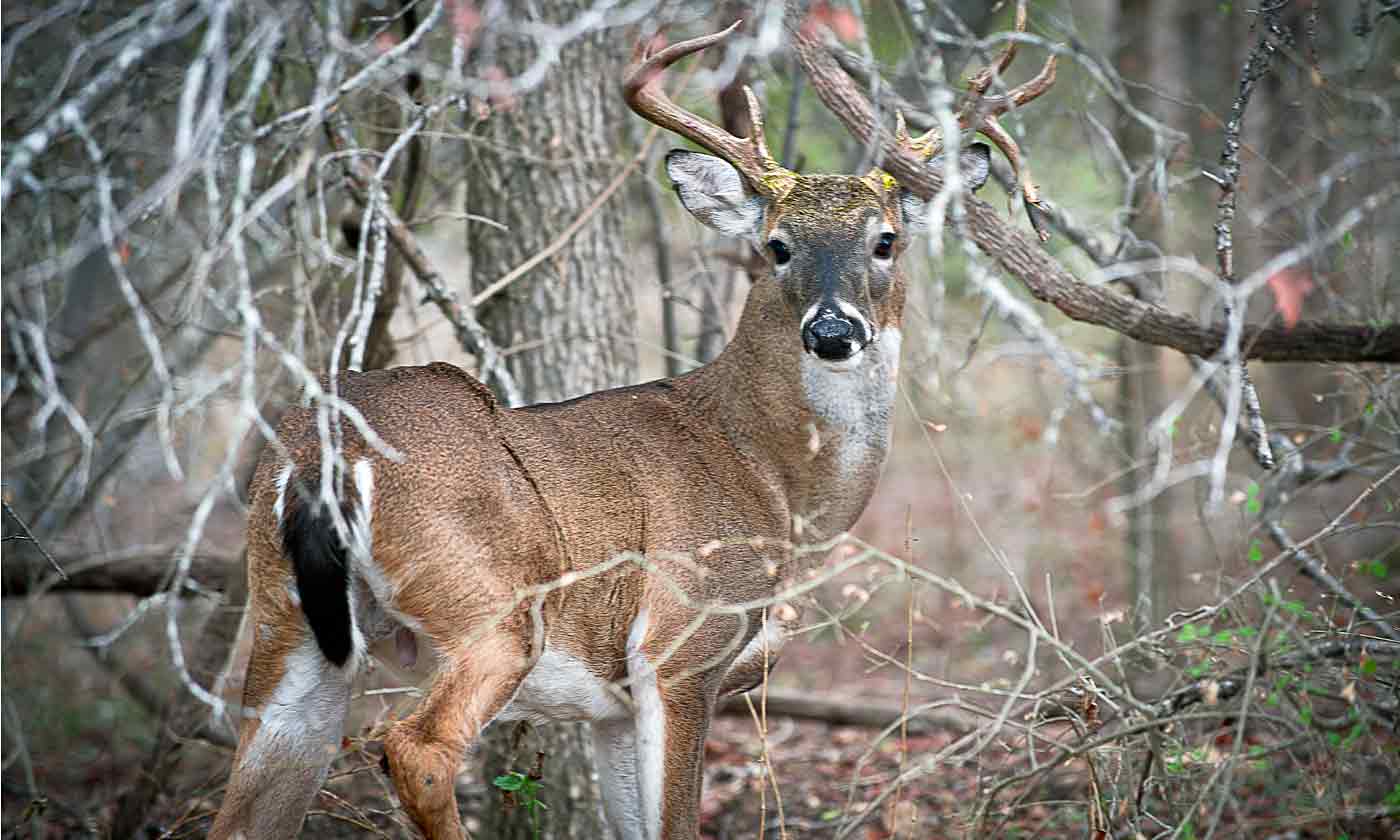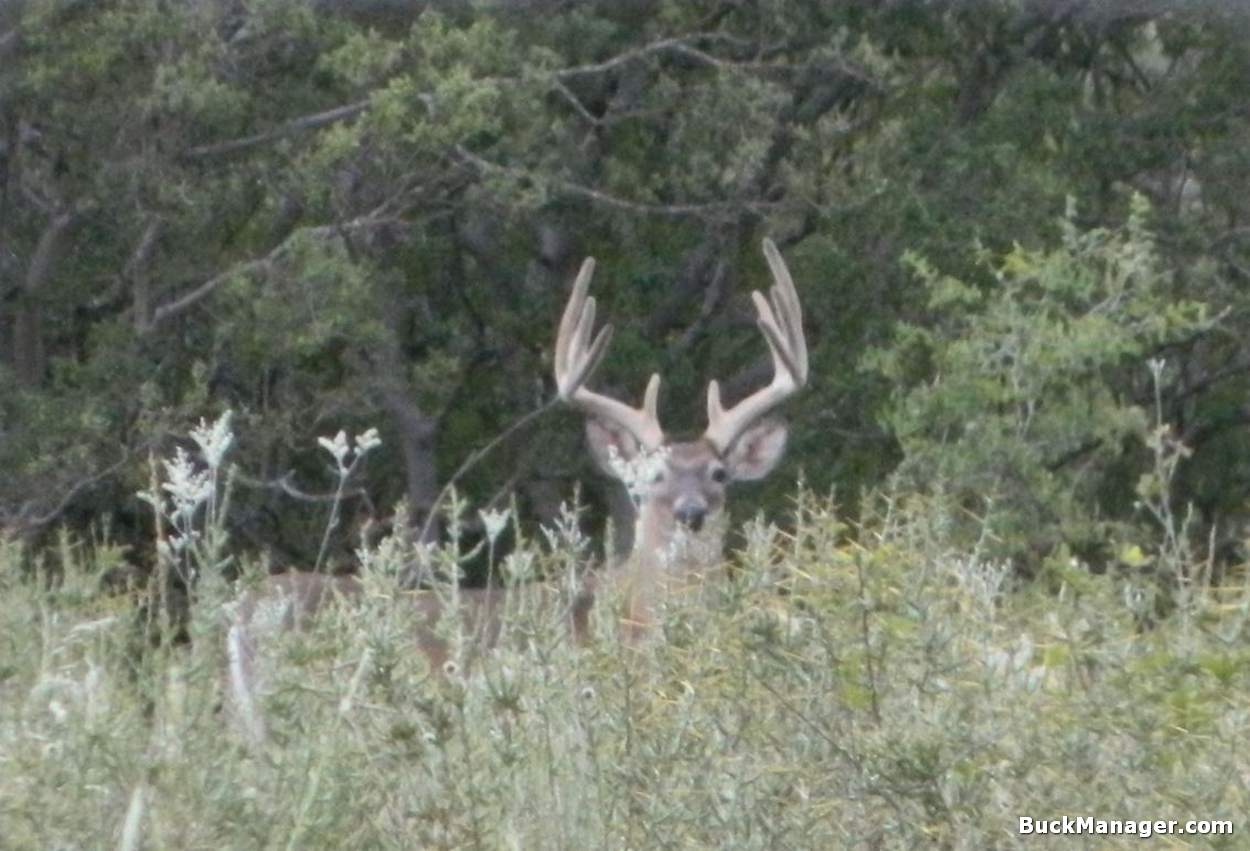Food & Cover for Deer
Question Submitted by Debbie: We have about 100 acres of coastal hay field that butts into dense brush. We keep 3 feeders running year around with soy/corn mix for deer. This year we had an abundance of acorns.
What do you suggest to build the big super bucks? Food plot ideas for whitetail in a droughty area? How do we draw them out of the brush into our feeder areas?

Deer Habitat 101
Response: Several questions were posed, but overall it sounds you are interested in improving the white-tailed deer found on your property. It also sounds like a lot can be done to improve the habitat found on the land, at least based on your description.
Building better habitat for deer will help you achieve many of your objectives. Food and/or water will attract deer. Deer will use a property if these items are unavailable on adjacent lands. But in order to hold deer and make them feel comfortable there the the property will need to an adequate amount of usable space for deer. Screening cover offers several benefits, for both deer and hunters.
Big Bucks & Screening Cover
First, it’s a lofty goal to grow “Super Bucks,” although I don’t know exactly what that term means to you. My guess is that you want to produce some high quality deer, at least those well above average for the area. Most land managers interested in whitetail hunting are right there with you.
The first step to growing better deer is to develop whitetail habitat on your property. This may be hard to hear, but coastal grass is of zero value to a white-tailed deer. It provides neither food nor cover for whitetail. From a land management standpoint, the only positive that coastal provides is the roots prevent soil erosion.

For native wildlife, including deer, areas comprised primarily of “improved,” introduced grasses may as well be a gravel road. Both are devoid of food and cover. Introduced grasses and gravel roads have their place in the world, but wildlife would assume avoid both.
Whitetail require screening cover, which can be provided by small trees, brush or tall grass, tall forbs. Brush is better overall, especially diverse brush cover, because deer eat the leaves and tender stems of palatable brush. This type of food is referred to as browse and is more important to deer during stress periods, summer and winter.
Land managers can increase the use of a property by deer by developing (designing, if you will) where screening cover exists on the property. Screening cover can be allowed to passively establish in certain areas/corridors, or screening can be actively planted directly into specific areas. Egyptian wheat, sorghums and switchgrass are good candidates on most properties.
Developing Deer Food Sources
Traditional spring and winter food plots are not recommended for wildlife in low rainfall areas unless a landowner has the ability to irrigate. Period. If supplemental food is desired then it should be accomplished another way. Options include supplemental feeding and improving native habitat.
It’s better to establish native, perennial forbs in areas where non-native grasses exists. This is 100-percent recommended if you are interested in providing both food and habitat for deer, since a native grass and forb mix will increase food and screening cover (usable space).
Converting improved pastures into deer habitat is not easy. It’s expensive to enhance and restore wildlife habitat. It’s also a decision between the animals that the coastal was planted for, cows, and white-tailed deer. Although both animals can coexist on a property, a landowner can not maximize both.
You can find a middle ground, where both livestock and deer benefit, but even then I am unsure whether “Super Bucks” can be produced. There are a number of factors that come into play, especially for small acreage properties.

Increase Screening and Habitat
In order to see a noticeable change in the deer on your property I’m going to recommend that you make real changes to the habitat found on the property. Work towards habitat solutions to habitat problems. Increase the amount of usable space for whitetail on the property and ensure adequate screening cover exists. It would be insane to do the same thing year after year and expect different results, right?
I understand the desire to shoot better bucks. A buck can be lured across a fence to a feeder, onto a property that offers very little for them. Hunters put deer stands and deer feeders on property boundaries all the time. If you desire better deer then identify the objectives that will help you get there and put those management practices into effect. Better deer habitat means better deer and better hunting.
It takes a lot to get a deer to maturity. It’s even more difficult for bucks. They fight amongst one another. They dodge hunters along the way. Or perhaps some of them survive only because management-minded hunter/s passed on them in the past, hoping to tag an older, bigger buck in a season or two. If there is a big buck across the fence it may be because someone else has already invested in it.
